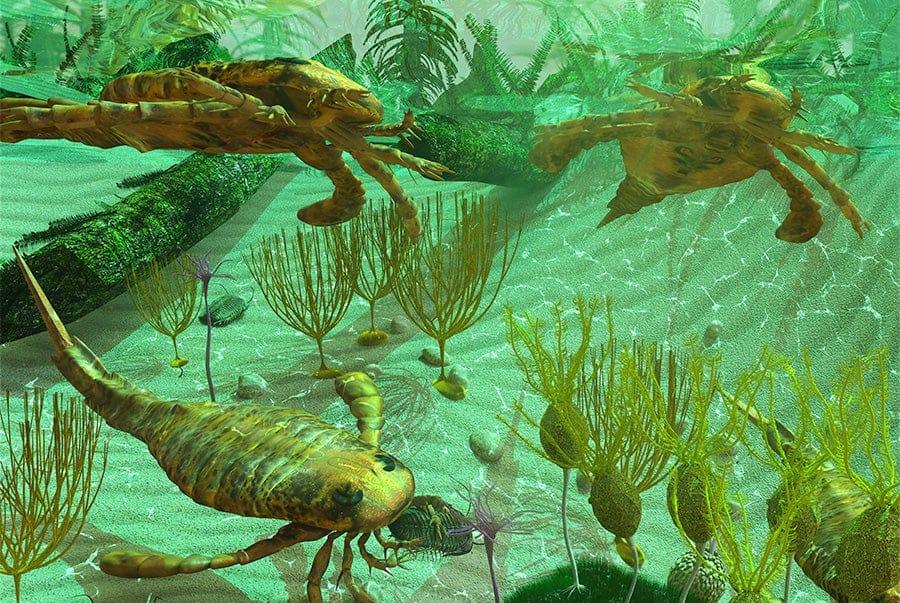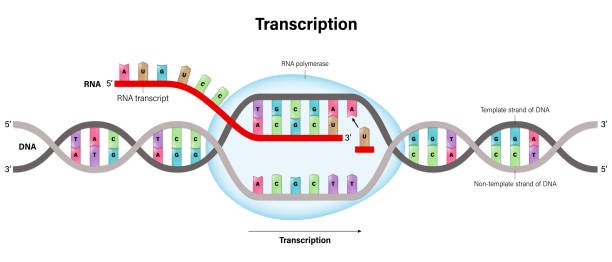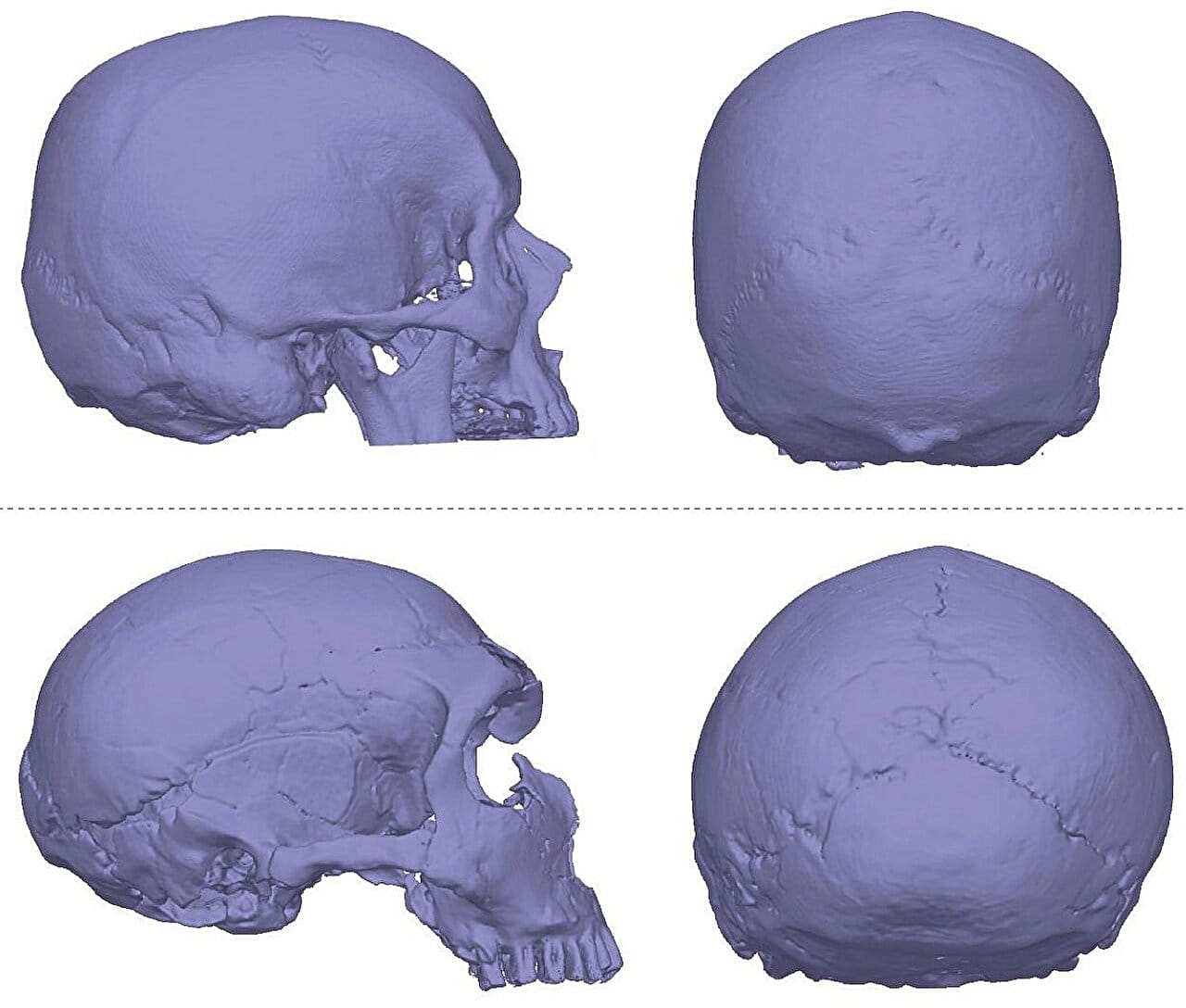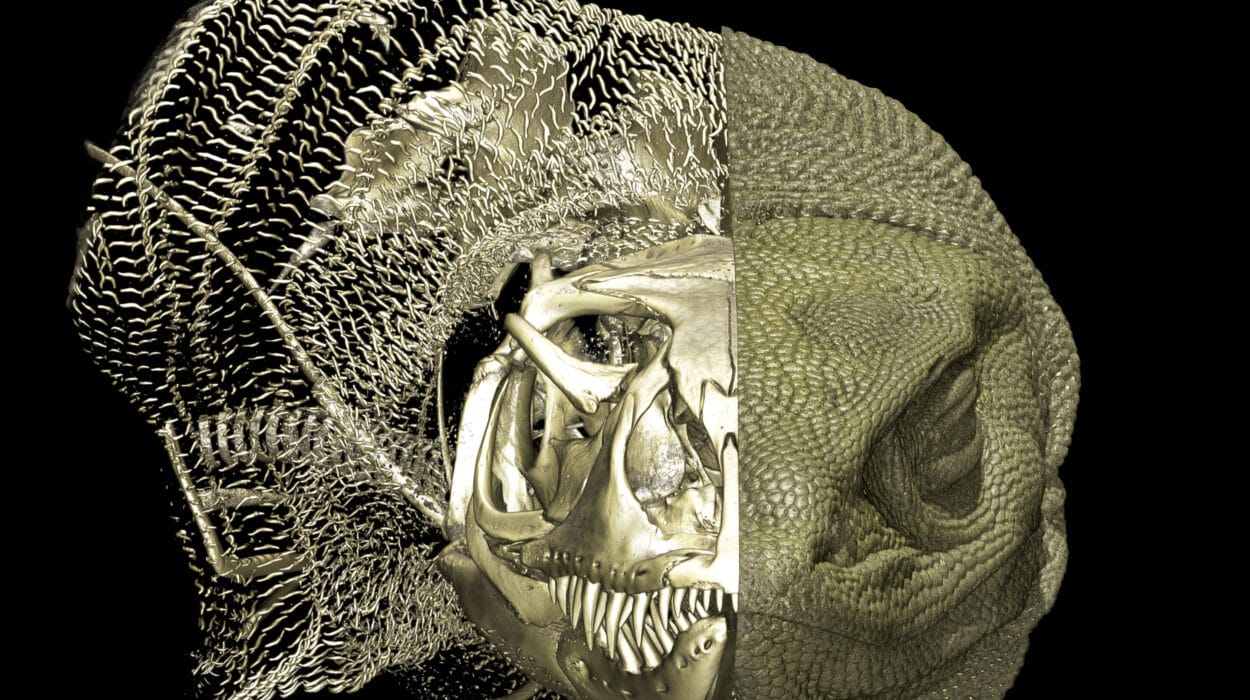Long before the flash of intelligence ignited in our human lineage, long before dinosaurs thundered across ancient Earth, before even the first forests or fish or eyes that could see, life on Earth lived in the quiet shadows. For over three billion years, this world was inhabited only by the microscopic—single-celled organisms that drifted silently in vast oceans, feeding, reproducing, and slowly, almost imperceptibly, evolving.
These early forms of life—bacteria, archaea, and later eukaryotes—built the scaffolding for everything to come. They gave Earth its oxygen, its nitrogen cycle, its biological rhythms. But they lacked one thing: complexity. Multicellular life, when it finally arrived, was timid and simple. Flat, soft-bodied creatures, often no larger than a fingernail, slithered and floated in muddy sediments during the Ediacaran period (roughly 635 to 541 million years ago). Their forms were ghostly and enigmatic—like leaf-shaped impressions pressed into stone. There were no claws, no shells, no eyes, no predation.
And then, as if triggered by some ancient cosmic switch, something happened. Something irreversible. Life began to build bodies of bold architecture, fierce weaponry, and astonishing innovation. This was the Cambrian Explosion—a geological blink of time in which biology went from whispers to symphonies.
A Geological Mystery Unearthed
The story of the Cambrian Explosion began not with biology, but with rocks. In the 19th century, geologists exploring the rugged hills of Wales discovered something astonishing in Cambrian-aged strata: an abundance of complex fossils, far more intricate than anything in earlier layers. Trilobites, with their armored bodies and compound eyes, lay scattered among fossilized worms, spiny lobopods, and creatures so bizarre they defied all classification.
Where had all these creatures come from? Why did such a rich diversity of life seem to appear all at once?
Charles Darwin, the father of evolution, found this deeply troubling. In On the Origin of Species, published in 1859, he acknowledged the Cambrian fossil record as a glaring contradiction to his theory. If life evolved gradually through countless tiny variations, why did the fossil record not show this slow progression? Why, instead, did it reveal a sudden explosion of diversity?
Darwin proposed that earlier forms simply had not fossilized, or had not yet been discovered—a prediction that would later be vindicated in part. But the enigma of the Cambrian Explosion lingered like a riddle carved into stone.
A Timeline of Life’s Awakening
The Cambrian Period began approximately 541 million years ago and lasted about 55 million years. But the “explosion”—that rapid burst of evolutionary innovation—occurred mostly within the first 20 to 25 million years of the Cambrian, making it extraordinarily fast by geological standards.
During this brief window, most major animal phyla—the highest categories in the animal kingdom—first appeared. This includes the ancestors of arthropods (insects, spiders, crustaceans), mollusks (snails, squid), annelids (segmented worms), echinoderms (starfish, sea urchins), and even the chordates—the group that includes vertebrates like us.
To truly appreciate the impact, consider this: the fundamental body plans that emerged during the Cambrian still underpin the diversity of animals alive today. Evolution has modified and reshaped them, but the core blueprints—the nervous systems, limbs, eyes, skeletons—originated here. It was as though life stumbled upon the master template for animals and decided, all at once, to build.
The Rise of the Body Plan
Before the Cambrian, life was mostly soft and squishy. It lacked segmentation, specialization, and protection. But during the explosion, animals began building hard parts—external shells, exoskeletons, and mineralized armor. These structures not only preserved better in the fossil record, but also allowed new ecological interactions to flourish: predator and prey, burrower and builder, swimmer and crawler.
Why did body plans suddenly evolve with such variety? One theory is that genetic innovations—especially the development of Hox genes—provided the flexibility to arrange body parts in new ways. Hox genes control the basic layout of an organism’s body: where the head goes, where limbs form, how segments are differentiated. With these genes in place, small genetic tweaks could create radically new anatomies.
Imagine the evolutionary equivalent of discovering a new set of LEGO instructions—suddenly, the same building blocks could create everything from jellyfish to centipedes.
The Arms Race of Evolution
One of the most powerful drivers of Cambrian innovation was the evolutionary arms race. Once some organisms developed hard shells or spines, others needed sharper teeth, faster movement, or better camouflage. For the first time, predation became a central force in evolution.
This sparked an ecological cascade: burrowing to hide from predators led to changes in sediment structure; swimming to chase prey led to stronger muscles and nervous systems; sensing danger led to the development of primitive eyes and other sensory organs.
The fossil record begins to show signs of behavioral complexity—trackways, burrows, feeding trails. Organisms were no longer passive driftwood; they were active agents navigating a dangerous world.
The Cambrian seas must have been teeming with strange interactions: armored trilobites crawling across the seafloor, worm-like predators ambushing from burrows, tentacled creatures drifting in search of plankton. It was no longer enough to exist. You had to compete, escape, defend, pursue.
The Role of Oxygen: Breathing Room for Complexity
One major factor that may have enabled the Cambrian Explosion was a rise in atmospheric and oceanic oxygen levels. Oxygen is the fuel of complex life—it powers metabolism, muscles, movement, and brains. Without sufficient oxygen, multicellular organisms remain sluggish and limited in size.
Studies of ancient rocks suggest that oxygen levels increased significantly just before and during the Cambrian. This may have crossed a critical threshold, allowing for the metabolic demands of larger, more active, and more complex animals.
More oxygen also allows for the development of collagen, the structural protein that holds animal bodies together. In a way, oxygen helped stitch evolution’s dreams into physical reality.
Burgess Shale: A Time Capsule of Wonder
Our deepest window into the Cambrian world comes from the Burgess Shale, a fossil-rich deposit in the Canadian Rockies. Discovered in 1909 by Charles Doolittle Walcott, this site preserves not just shells and bones, but the soft tissues of ancient creatures—mouthparts, gills, even digestive systems—thanks to a rare set of geological circumstances.
What the Burgess Shale revealed was astonishing. Here were animals so bizarre they looked like aliens: Anomalocaris, a giant shrimp-like predator with grasping appendages and a circular mouth; Hallucigenia, a spiny worm that scientists initially reconstructed upside down; Opabinia, with five eyes and a vacuum-hose proboscis.
These were not ancestors of any modern group, but evolutionary experiments—some successful, others dead ends. The Cambrian was a time not only of innovation but also of divergence and failure. Nature was throwing ideas at the wall of evolution to see what would stick.
Was It Really an Explosion?
Despite the dramatic term, the Cambrian Explosion was not instantaneous. It unfolded over tens of millions of years—still rapid by evolutionary standards, but not a sudden bang. In recent decades, fossil evidence has emerged showing that many of the building blocks of the Cambrian animals evolved earlier, during the late Ediacaran.
Molecular clock studies, which estimate divergence times using DNA, suggest that many animal lineages had already split before the Cambrian—they just weren’t leaving many fossils.
In that light, the Cambrian Explosion was less a birth than a reveal—a moment when biology stepped into the spotlight, having spent eons rehearsing in the wings.
A Turning Point in Earth’s Story
Why does the Cambrian Explosion matter so much?
Because it marks the first great act of animal life, the moment when the evolutionary tree sprouted its major limbs. It set in motion ecological patterns—predation, competition, symbiosis—that still shape life today. It showed that evolution is not always slow and steady; it can move in bursts, driven by genetic, environmental, and ecological shifts.
It also serves as a reminder of contingency. Many Cambrian lineages went extinct. Had different ones survived, the history of life could have unfolded in profoundly different ways. There might never have been vertebrates. No mammals. No humans.
In the grand narrative of Earth’s history, the Cambrian Explosion is the prologue to complexity, the chapter where life finds its courage, its diversity, its motion.
Lessons for Today—and Tomorrow
As we probe the Cambrian Explosion with increasingly sophisticated tools—from isotope analysis to gene sequencing—we gain not only insight into our past, but tools for understanding evolutionary innovation itself. How do new forms arise? What allows ecosystems to absorb rapid change? What happens when balance is disrupted?
These are not just academic questions. As we enter the Anthropocene, we face an inverse problem: a human-caused extinction event, not an explosion of life, but a contraction. Understanding how life diversified helps us understand what we’re losing—and what it might take to rebuild.
Moreover, the Cambrian teaches us to look deeper than appearances. For centuries, paleontologists ignored soft-bodied fossils because they were rare. But those rare impressions turned out to hold the keys to understanding life’s most transformative moment. In both science and society, the lesson is the same: the most important truths may lie in the margins, the overlooked, the fragile.
Awe in the Stone
To stand before a slab of Cambrian shale is to feel something almost holy. Here are creatures that lived over half a billion years ago, their bodies pressed into stone by time. They had no inkling that one day their likeness would be studied by a species not yet dreamed of.
Their moment was brief. The Cambrian seas churned with life and then quieted. Extinctions came and went. Continents drifted. Mountains rose. And yet, their legacy endured. Their body plans shaped the future. Their eyes glimpsed the first predators. Their muscles powered the first swims.
And now, we—creatures made from those same ancient genes—stand on the shoulders of that explosion.
We see in it not just a scientific mystery, but a mirror. It is a story of potential awakened, of diversity born from chaos, of life daring to be more than it was.
That is why the Cambrian Explosion matters. Not because it was inevitable, but because it wasn’t.
It was a miracle born of physics, chemistry, and chance. And it reminds us that even in the deepest silence of Earth’s history, evolution was dreaming.






